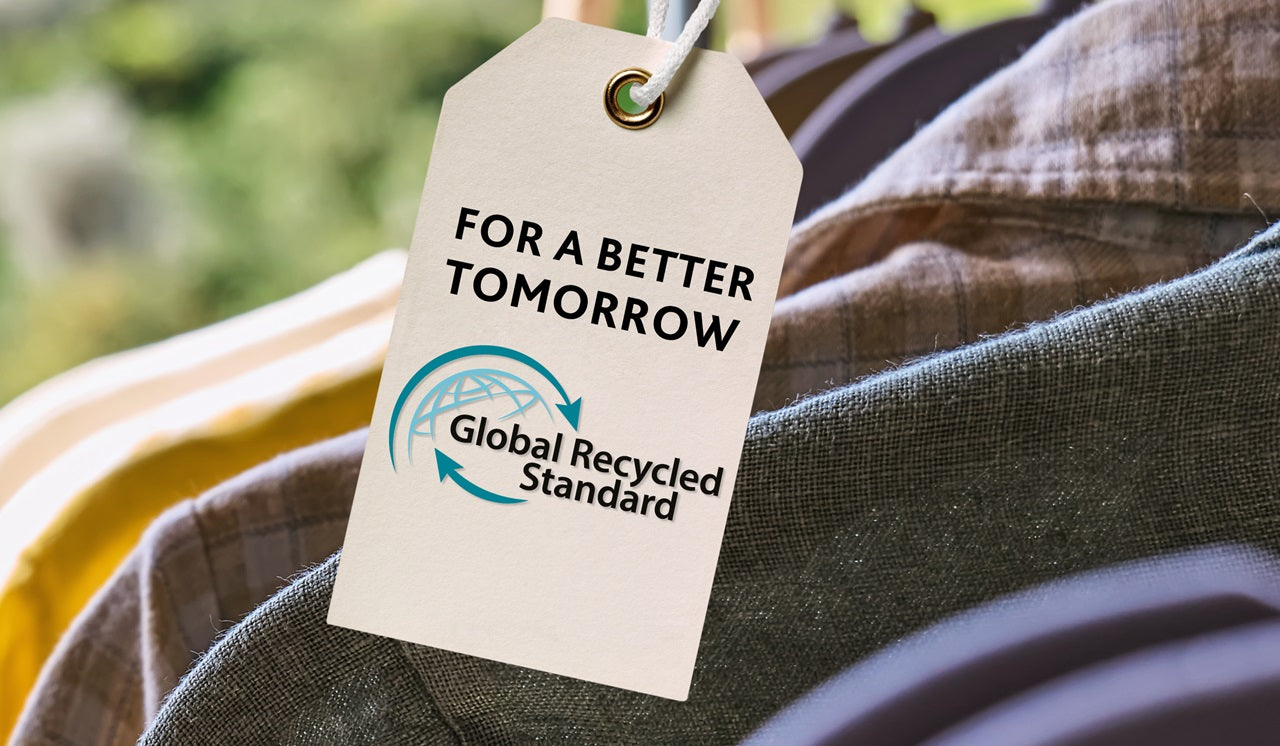What are the differences between these manufacturing methods? What is their impact on the environment? Are some to be preferred? Clother explains! Many consumers are now aware of the impact of fashion on the environment. And that’s good news, because it gives a big boost to eco-responsible fashion! More and more eco-friendly clothing brands are emerging, and offering fashion that is much more respectful of the environment.
But between clothes made from organic, upcycled or recycled materials… We can get lost!
What are the differences between these manufacturing methods? What is their impact on the environment? Are some to be preferred? Clother explains!
CLOTHING MADE FROM NATURAL ORGANIC MATERIALS, MORE ENVIRONMENTALLY FRIENDLY
Long limited to food, organic now extends to many products: cosmetics, cleaning products, clothing... We are even starting to see furniture appear with the organic label!
An organic material is intended to be free of chemicals, GMO-free and produced with respect for the land and nature so as not to overuse it (periods without sowing to be respected, for example).
It is therefore entirely conceivable to imagine clothing made from natural organic materials. The best known being organic cotton, which does not undergo chemical treatments and whose production method uses less energy and water. Which is a good argument when we know that it takes between 7,000 and 10,000 liters of water to make a pair of classic jeans, for example.
Organic materials are therefore better for the planet. But not only !
Recent studies carried out by Greenpeace as part of the “Detox” campaign have shown that 2/3 of our clothes contain endocrine disruptors.
The latter are known to alter the functioning of the hormonal system of living beings. Fortunately for us, the quantities in our clothing are too small to have a direct impact on humans.
Problem: some of it ends up in the water, rejected by textile factories and our own washing machines.
They therefore indirectly disrupt the fauna and flora of the seabed.
Organic materials are therefore real progress for more sustainable fashion! The ban on the use of chemicals makes it a material free of endocrine disruptors.
But be careful not to fall into certain traps. Eco-responsible fashion is shaking some big, well-known fast fashion brands. They therefore use organic as a marketing argument to regain market share.
A so-called “organic” t-shirt will sometimes only be made from a tiny part of organic cotton. To avoid being fooled, choose clothes made with at least 80% organic cotton, and with the GOTS label. We explain everything about labels in this dedicated article .
In addition to organic cotton, other natural materials, not necessarily labeled organic, but with a naturally low environmental impact, should be favored: linen, hemp, wool or even tencel. This leaves a choice, to ban conventional cotton as much as possible, and petroleum-based synthetic materials such as polyamide and polyester.
The only drawback of these natural and organic materials? These are obviously virgin materials, produced precisely. We are therefore not yet in the circular economy.

Upcycled clothing to limit waste
Upcycling is the act of diverting something (here, fabrics) from its original use without transforming it. It is because it does not go through the transformation box that upcycling differs from recycling. In the world of eco-responsible fashion, upcycling consists of recovering fabric scraps from the textile industry (and God knows there are some), to create new collections. These are either production scraps, or rolls of new fabric whose color did not suit the brand, or part of which has a small defect...
Most of the time, it is therefore new fabrics that are found in upcycled clothing. Fabrics which have for the most part been saved from certain destruction. And that would have been a shame, when we see what brands like The swallows Or Refab Market with these scraps.
So of course, these materials were often manufactured in a conventional way (no organic, no label). This is sometimes the small disadvantage of upcycling. But rather than seeing these materials end up in the trash, and therefore produced for nothing, they might as well be used!!
Recycled clothes to make something new out of old
Clothing production is such that “if the textile industry stopped producing tomorrow, there would be enough clothing fibers to clothe four future generations” according to the founders of Collection40 .
Our clothes have an increasingly short lifespan in our closets: we get tired of them, the quality drops, they go out of style... In short, we get rid of them and they can end up in waste. open-air clothing dumps in African countries .
What if we recycled this waste? Instead of producing new materials, let's try to reuse! This is the biggest challenge for the textile industry: moving from a purely linear economy (Production – use – waste) to a circular economy (production – use – revaluation – use – etc.).
Brands are taking up the challenge, and the result is breathtaking. We think in particular of the Rifò brand which recycles cashmere to make beautiful recycled cashmere clothes, or Mud Jeans which recycles old jeans . In the case of these 2 brands, the environmental footprint is at least 5x lower than “conventional” clothing: less water, less transport, no pesticides, less energy, no land use , etc.
100% recycled is not easy to obtain with all materials, but pay attention to the percentage of recycled materials on the labels! Once again, some brands use this communication argument for a poor proportion of recycled materials.
We also advise you to favor recycled natural materials (wool, cotton), because they can be recycled several times, and because the recycling process is 100% mechanical (no chemicals).
As for recycled plastic materials, they represent significant progress for certain types of clothing, particularly sportswear, tights and coats. But for sweatshirts, t-shirts, dresses or skirts, we prefer organic or recycled cotton, or natural materials.
We must also pay attention to the conditions for recycling raw materials. The best is to trust serious labels, and in particular the GRS label.

What to choose ?
In short, whether a garment is organic (or made from responsible natural material), recycled or upcycled, it will always present significant advantages for the planet compared to clothing made from conventional cotton or synthetic materials.
When possible, we advise you to favor recycled natural materials and upcycling. But this is not always possible, and organic cotton and other natural materials are then a very good alternative.
And the most important thing is simply more reasoned consumption. Let's consume less, but better. By better, we mean local, respectful of the environment and people.
These are the different reasons that pushed us to create Clother: to make slow fashion easier and accessible everywhere in Switzerland. Discover the brands we have selected, and join the adventure !













